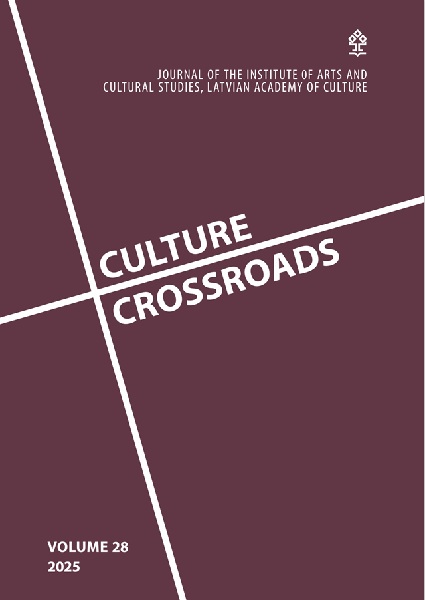THE BOUNDARIES OF BIOLOGICAL DIVERSITY IN BRAZILIAN INTANGIBLE CULTURAL HERITAGE
DOI:
https://doi.org/10.55877/cc.vol28.616Keywords:
heritage, biodiversity, Brazil, traditional communities, indigenous peoplesAbstract
The recognition of cultural heritage at the intersection of local knowledge and biological diversity is closely linked in Brazil to several legal mechanisms – those aimed at protecting intangible cultural goods and those governing access to biodiversity and associated knowledge. The Department of Intangible Heritage was established in 2004 within the National Institute of Historical and Artistic Heritage (IPHAN), following the promulgation of Federal Decree No. 3.551/2000, which introduced the inclusion of intangible cultural assets in the national heritage framework. This analysis focuses on how biodiversity is integrated into these heritage dynamics. Currently, 52 items of various kinds are listed as intangible heritage, twelve of which involve plant or animal diversity – whether spontaneous, cultivated, or bred. These examples reflect a wide range of understandings of biological diversity, as living beings may constitute the core of the heritage asset or appear as references or elements, whether tangible or intangible, that relate to it. The nature of the relationship with biodiversity varies significantly across these records. Accounting for the interplay between society and biodiversity calls for greater interdisciplinarity among the “active disciplines” in heritage studies – an approach that would help renew essential debates in a context where sustainability is a central concern.
Downloads
References
Brasil (1988). Constituição da República Federativa do Brasil. Brasília.
Brasil (2000a). Decreto Presidencial nº 3.551/2000, de 04 de agosto de 2000. Institui o Registro de Bens Culturais de Natureza Imaterial que constituem patrimônio cultural brasileiro, cria o Programa Nacional do Patrimônio Imaterial e dá outras providências.
Brasil (2000b). Inventário Nacional de Referências Culturais: manual de aplicação. Brasília: IPHAN.
Brasil (2008). Arte Kusiwa : pintura corporal e arte gráfica wajãpi. Dossiê de registro. Brasília : IPHAN.
Brasil (2008–2009). Produção artesanal e práticas socioculturais associadas à cajuína no Piauí. Dossiê de registro. Brasília: IPHAN.
Brasil (2009). Modo de fazer Viola-de-cocho. Dossiê 8. Brasília: IPHAN.
Brasil (2011). Bonecas Karajá: arte, memória e identidadeindígena no Araguaia. Dossiê descritivo dos modos de fazer ritxoko (versão atualizada). Goiânia – Brasília: MA, UFG, IPHAN.
Brasil (2014). Modo Artesanal de Fazer Queijo de Minas. Serro, Serra da Canastra e Serra do Salitre / Alto Paranaíba. Dossiê 11. Brasília: IPHAN.
Brasil (2014). Parecer n° 28/2014. Processo n° 01450.14375/20087 – Solicita Registro do Modo de Fazer Tradicional da Cajuína do Piauí como Patrimônio Cultural Brasileiro. Brasília: IPHAN.
Brasil (2019). Resolução nº 5/2019, de 12 de julho de 2019 sobre a Revalidação dos bens registrados. Accessible : https://www.in.gov.br/web/dou/-/resolucao-n-de-1de-julho- de-201196323758 vu le 04/04/2022 (visité le 01.02.2024)
Carneiro da Cunha, M. (2005). Introdução. Revista do Instituto do Patrimônio Histórico e Artístico Nacional, nº 32, p. 15–27.
Emperaire, L., Velthem, L. H. van, Oliveira, A. G. de, Santilli, J., Carneiro da Cunha, M., & Katz, E. (2010). Dossiê de registro do sistema agrícola tradicional do Rio Negro. Brasília: ACIMRN / IRD / IPHAN / Unicamp-CNPq.
Emperaire, L., Velthem, L. H. van, & Oliveira, A. G. de (2012). Patrimônio cultural imaterial e sistema agrícola: o manejo da diversidade agrícola no médio Rio Negro (AM). Ciência e Ambiente, nº 44, p. 154–164.
Fonseca Londres, M. C. (2010). Sistemas agrícolas locais como patrimônio. Accessible : http://muitoprazerbrasil.blogspot.com.br/2010/11/maria-cecilia-londres-fonseca- sistemas.html (visité le 01.02.2024).
Gonçalves de Carvalho, L. (org.) (2011). O artesanato de cuias em perspectiva – Santarém. Rio de Janeiro: IPHAN / CNFCP.
Gonçalves de Carvalho, L. (org.) (2015). Dossiê de registro do modo de fazer cuias no baixo Amazonas (versão atualizada), Santarém: IPHAN / CNFCP.
ISA – Instituto Socioambiental (2018). Dossiê sistema agrícola tradicional quilombola do Vale do Ribeira – SP. São Paulo: ISA / IPHAN.
Moreira, P. A., Mariac, C., Zekraoui, L., Couderc, M., Rodrigues, D. P., Clement, C. R., & Vigouroux, Y. (2017). Human management and hybridization shape treegourd fruits in the Brazilian Amazon Basin. Evolutionary Applications, nº 10 (6), p. 577–589. https:// doi.org/10.1111/eva.12474
Oliveira, A. G. de et al. (2007). Preâmbulo, in IPHAN (ed.), Cachoeira de Iauaretê. Dossiê 7.
Brasília: IPHAN.
Downloads
Published
Issue
Section
License
Copyright (c) 2025 Culture Crossroads

This work is licensed under a Creative Commons Attribution 4.0 International License.


